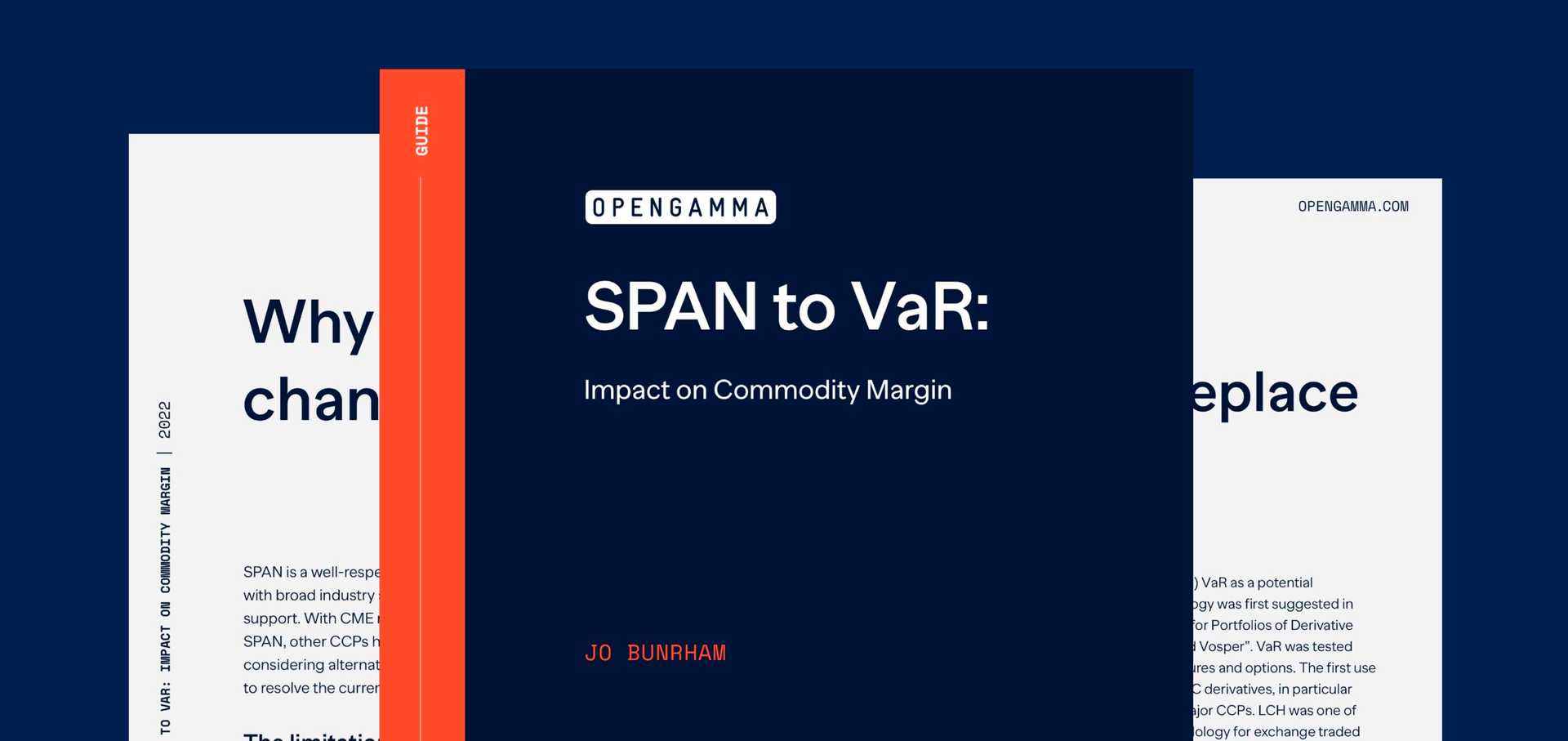What Is The SPAN Algorithm?
SPAN Margin Meaning
Standard Portfolio Analysis of Risk (SPAN) is an Initial Margin algorithm first introduced by CME in 1988. There have been several enhancements since that date to support the introduction of new contracts. Some CCPs have also introduced their own version of the SPAN Initial Margin algorithm including the ICE IRM 1 methodology. The SPAN Margin model estimates worst case loss under a number of scenarios based on moves in prices and volatilities.
How Is SPAN Margin Calculated?
The SPAN Initial Margin Calculation consists of 3 main components:
- Scanning Loss is a Worst Case Loss calculation based on the 16 SPAN scenarios (combinations of up and down price and volatility shifts). The Scanning Loss is the largest loss across these scenarios for all contracts on the same underlying (different expiration dates, futures and options etc).
- The Intra Contract Spread Charge is applied to cover the price spreads between different expiries that are ignored in the calculation of Scanning Loss. Specific spread charge rates are set for combinations of expiries on the same underlying.
- The Inter Contract Offset is based on spreads between different products. A percentage saving in the expected losses is calculated for offsetting positions.
The SPAN Margin is calculated as the sum of these components. The SPAN Initial Margin Algorithm also includes a Short Option Minimum charge that is calculated for all short option positions. This is used as a lower boundary on the margin which could otherwise be insufficient for positions composed mainly of out of the money short options.
Pros and Cons Of The SPAN Algorithm
Benefits Of The SPAN Algorithm
The SPAN Initial Margin Algorithm is used by many of the world’s CCPs which means there are less margin algorithms that need to be understood and it is easier to compare margin requirements between markets. For a simple portfolio, for example a long position in a single future, it is easy to calculate the SPAN Margin requirement which can be useful for less sophisticated firms. SPAN is a portfolio based algorithm which results in a lower margin compared to a calculating margin as a simple percentage of contract value.
Negatives Of The SPAN Algorithm
The SPAN Initial Margin Algorithm was designed when futures and options contracts were much simpler. It has had to be enhanced over time to support more complex contract structures, for example additional expiries and combination products. These updates have made the SPAN algorithm very difficult to understand and replicate. It is also difficult for the CCPs to support because of the 1,000s of parameters that need to be set.
SPAN Vs VaR
Replacing SPAN with a VaR based methodology was first suggested in 1999 and 25 years later this is now becoming a reality. Most of the major CCPs are in the process of moving from SPAN to their own bespoke methodologies based on Filtered Historical Simulation. This uses historical scenarios that have been adjusted to reflect current volatility to calculate the Value at Risk (VaR) of a portfolio. These new methodologies inherently recognise the spreads within a position and are therefore more efficient in calculating Initial Margin for complex portfolios.
Learn More About The Move From The SPAN Algorithm To The VaR Algorithm
Discover more of our content around SPAN and VaR by clicking one of the links below. Additionally, learn other definitions of key margin terminology with our A-Z Margin Terminology page. Lastly, learn more about OpenGamma by watching our demo and taking a look at our product and solutions pages.


